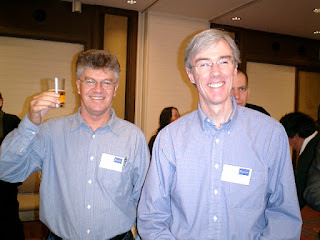I was first in touch with Godfried Toussaint by email when I was working on my PhD, over 30 years ago. From him and his books I learned about computational morphology, which I used as the theme and title of my thesis "Computational morphology of implicit curves", later published in The Visual Computer as Computational morphology of curves. I met him briefly in 2001 at the Canadian Conference on Computational Geometry in Waterloo, when I gave a talk also based on his work: Good approximations for the relative neighbourhood graph. On both occasions, he was very kind, ready to give free advice. Indeed, he was one of the kindest people I've known.
I have recently published a paper dedicated to his memory in Computers & Graphics: Region reconstruction with the sphere-of-influence diagram. In that paper, we introduce the sphere-of-influence diagram of a set of points in the plane: it is the planar diagram induced by intersecting the sphere-of-influence graph introduced by Toussaint with the Delaunay triangulation. Surprisingly, to the best of our knowledge this natural diagram has not been studied or used before. We use the sphere-of-influence diagram for region reconstruction from point samples. I hope it's a fitting homage to a computational geometry pioneer.
I have recently published a paper dedicated to his memory in Computers & Graphics: Region reconstruction with the sphere-of-influence diagram. In that paper, we introduce the sphere-of-influence diagram of a set of points in the plane: it is the planar diagram induced by intersecting the sphere-of-influence graph introduced by Toussaint with the Delaunay triangulation. Surprisingly, to the best of our knowledge this natural diagram has not been studied or used before. We use the sphere-of-influence diagram for region reconstruction from point samples. I hope it's a fitting homage to a computational geometry pioneer.























